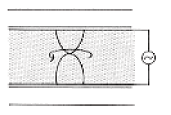





Twisted Nematic (TN) Type
Contrast tends to drop when used with large screens.

Molecules twisted 90 degrees.
Super Twisted Nematic (STN) Type
Good rise characteristic for a high contrast display.

180 degrees to 260 degrees twist. Colored yellow-green, gray and blue
Film Super Twisted Nematic (FSTN) Type
A high polymer, double refraction film is used to create black-and-white LCDs of exceptional quality.
The single-layer compensation film is called FSTN.

Types of LCDs according to light source
Backlit: Liquid crystal materials emit no light of their own. Small
and inexpensive LCDs are often reflective, which means to display
anything they must reflect light from external light sources.
Reflective: Most computer displays are lit with built-in fluorescent
tubes above, beside and sometimes behind the LCD. A white diffusion
panel behind the LCD redirects and scatters the light evenly to ensure
a uniform display. On its way through filters, liquid crystal layers
and electrode layers, a lot of this light is lost -- often more than
half!